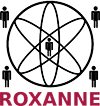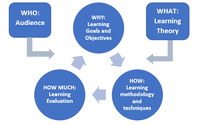ROXANNE Training Framework: Delivering the training material to end-users through remote (or physical) training sessions
Usually, the word ‘learning’ is automatically connected with school, children, students, classrooms, and teachers. However, there is an aspect of learning that can be easily overlooked. Based on the statistics provided by the Adult Education Survey (AES) on lifelong learning, almost 45% of people in the EU aged 25-64 took part in education and training, with the majority belonging in the younger, 25-34 age category. [1]. The concept of Adult Learning d is a vital component of the EU’s lifelong learning policy” [1]
According to Kolb (1984) [2], ‘learning is the process whereby knowledge is created through the transformation of experience’. In order to transform that experience into an impactful and engaging process, it requires the ability to have a specific plan and follow an effective methodology, enriched with all the relevant tools and individuals who will support this process. As depicted in Figure 1, the main steps to design an effective learning program can be summarized as (a) WHO: Get to know your audience, (b) WHAT: Get to know the theoretical foundation that surrounds this type of audience, (c) WHY: Set the goals and objectives of your learning course (d) HOW: Select the methodology and techniques for the needs your learning course, (e) HOW MUCH: Set the evaluation criteria and feedback to the objectives and the strategy.
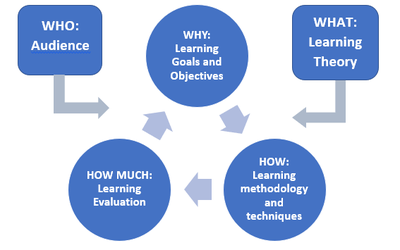
Figure 1 Steps towards an effective learning program
WHO: Get to know the audience
For the ROXANNE project, the audience is primarily adult learners stemming mostly from Law Enforcement Agencies. The main characteristics of an adult learner, coming also from Law Enforcement Agencies, can be summarized as[4]:
- They have established clear goals for participating in the specific learning process, setting also certain expectations of the learning process. Personal and professional development, fulfillment of specific needs, prestige acquisition is but some of the aforementioned incentives
- They have a wide range of diverse experiences deriving from a range of life situations, family, relationships, business, etc., which bring them to their learning experience
- They have developed their personal preferred learning style depending on their personal characteristics, abilities, and experiences
- They tend to present more active participation in the learning activities, demanding to be treated with maturity, thus also challenging the educational content and the methodology used.
- They face learning obstacles deriving from social obligations, duties, or other internal psychological factors.
- They may develop defense mechanisms and resignation, leading them to resist sharing new insights and redefine previous knowledge, values, and habits.
WHAT: Learning Theory (Adult)
Adult learning theories provide insight into the way adults learn, allowing for the creation of modules as effective and practical as possible. There have been formulated several learning theories across centuries, each one focusing on specific psychological and sociological traits of a specific target group. One of the most well-known theories applied to several LEA training modules is the theory of Andragogy, which establishes a (self) learning approach rather than a pure teaching approach. First proposed by Knowles in 1968 [5], it focuses on the different needs of the adult learners allowing them to participate in an interactive process through self-directed group discussions and active debate within the context of the classroom which leads to the continuous transformation of their experiences. According to Merriam (2001) [6], ‘the five assumptions underlying andragogy describe the adult learner as someone who (a) has an independent self-concept and who can direct his or her own learning, b) has accumulated a reservoir of life experiences that is a rich resource for learning, (c) has learning needs closely related to changing social roles, (d) is problem-centered and interested in immediate application of knowledge, and (e) is motivated to learn by internal rather than external factors’[7]. The trainer’s role is to facilitate learners’ movement toward more self-directed and responsible learning as well as to foster their internal motivation to learn rather than act just as a lecturer or grader.
ROXANNE training process is going to adopt this training format, enhancing it with the main premises of Kolb’s theory of learning named ‘Experiential Learning’. Based on the famous phrase from the Chinese philosopher Confucius (450 B.C.) [8] “Tell me, and I will forget. Show me, and I may remember. Involve me, and I will understand." this learning theory was first coined in the 1970s, also adopts a hands-on approach that puts the learner at the center of the learning experience, combining it with a reflective learning style. It is represented by a four-stage learning style that includes the following steps [9] (Figure 2)

Figure 2 Kolb’s Learning Cycle [9]
- Concrete Experience – The cycle begins with the task each individual is assigned to do/learn. Kolb underlines the fact that participants should be active learners and not passive bystanders
- Reflective Observation – The second step of the cycle is related to reflecting on what has been done or experienced. It is thus critical to not only create opportunities for experience-based learning but also provide time and space to encourage reflection
- Abstract Conceptualization – The third step underlines the process of understanding what has happened interpreting the events and the relationships between them.
- Active Experimentation – The final step is putting theory into practice and proceed to the final evaluation of the learning process.
WHY: Learning goals and objectives
The cornerstone for an effective learning process is to set clear and relevant goals and objectives, which stem both from the participants and the trainers/instructors. To begin with, training goals are considered to be a broader concept, like general statements of what one hopes to accomplish as a result of training, while training objectives concern the specific results of each training module. In order to set clear objectives, one must know the needs of the project/program and the real potential of the learners. Learning objectives have to (a) clearly describe the skill or behavior that has to be achieved after the end of each training module, (b) indicate the conditions where the trainees will need to demonstrate their knowledge and skills acquired, and (c) be measurable in terms of final performance [10].
Table 1 summarizes the objectives for each iteration focusing on the first field tests.
Table 1 ROXANNE 1st Field Test - Training Modules
|
Module |
Objective |
|
Audio Pre-Processing |
At this phase of the project, the purpose of the training module is the familiarization of LEAs with the proposed by ROXANNE technologies. The basic configuration of the tools as well as the set of input files is within the scope of training process.
|
|
Speaker, Age, and Gender Identification |
|
|
Language Identification |
|
|
Automatic Speech Recognition |
|
|
Entity Detection |
|
|
Topic Detection |
|
|
Network Analysis |
|
|
Input/output GUI |
HOW: Learning Methodology and Techniques
As Rogers and Horrocks (2010)[11] discuss, we can distinguish three adult education sectors. There is the formal one, which consists of courses and classes run by schools, colleges, and other agencies that belong to the educational system. The extra formal (non-formal) that consists of classes and courses provided from agencies outside the educational system (e.g. training agencies, government departments, etc.). and the information that refers to educational activities engaged by voluntary agencies and informal groups.
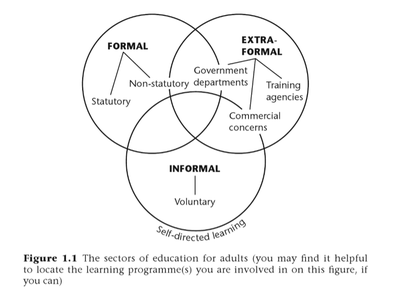
Figure 3 Sectors of Adult Education
ROXANNE learning sector lies primarily to the second group. Selecting specific learning methodology and techniques is the concrete outcome of the learning objectives and final outcomes, the content, the characteristics of the participants the time constraints as well as the potential of implementation and available infrastructure.
Training Framework
To train LEAs and trainees coming from different backgrounds anon the use of the ROXANNE system, we will use an online educational platform. Having identified and determined different aspects of the ROXANNE platform, we decided to use Moodle, as it has been proven flexible enough to allow the design and implementation of courses that will serve well both instructors and learners. The educational process will be divided into training modules. Educators will be assigned to trainees Each module will operate as a micro-website within the platform where all participants will be able to communicate with each other through the module’s forum, which will be visible only to them. Educators may post questions for evaluation and practicing purposes. All material will be available according to educators’ decisions through the module for easy downloading, while time restrictions may apply for all trainees regarding availability.
External resources (Web links, videos, pictures, etc.) can be embedded in the material for security reasons or to point trainees directly to them.
For practice purposes, we will develop dedicated workshops; from simple questions and answers to more complex quizzes where each trainee will be able to test their knowledge on the module content upon finishing their study of it. In the case of homework, where this may apply, the platform will allow educators to assign tasks for the trainees and collect feedback in an easy-to-use fashion.
Trainees will be grouped in cohorts according to their organization, or any other criteria. Through this way, educators will have the possibility to assign different tasks to different groups.
If necessary for the benefit of the educational process, educators will assign to each trainee a total scoring reflecting their performance at the end of the teaching period, or individually for every separate task and/or homework. Moodle’s scoring features offer a reliable process of scoring and pass grades to each member, keeping it hidden from the other members or not, according to the instructors or group’s decision.
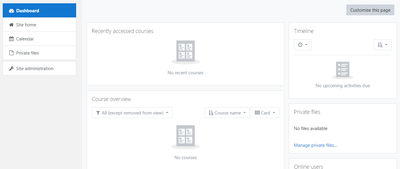
Figure 4 Web Interface of Training Platform
References
- https://ec.europa.eu/eurostat/statistics-explained/index.php/Adult_learning_statistics
- Kolb, D. A., 1984. Experiential learning: Experience as the source of learning and development. New Jersey: Prentice-Hall.
- https://www.simplypsychology.org/Erik-Erikson.html
- Kokkos, A., 2005. Adult Education. Detecting the field. Athens: Metaichmio
- Merriam, S. B., 2001. Andragogy and self-directed learning: pillars of adult learning Theory, New Directions for Adult and Continuing Education, 89 (1), 3-13.
- https://elearninginfographics.com/adult-learning-theory-andragogy-infographic/
- K., 2008. Experiential Perspectives. In J.M. Spector, et.al., 2008. Handbook of Research on Educational Communications and Technology, 3rd ed. London: Taylor Francis Group. P. 35
- McLeod, S. A., 2017. Kolb - learning styles and experiential learning cycle. Simply Psychology. https://www.simplypsychology.org/learning-kolb.html
- https://www2.le.ac.uk/departments/doctoralcollege/training/eresources/teaching/theories/kolb
- https://eclearn.emmanuel.edu/courses/1285497/pages/how-to-write-measurable-learning-objectives
- Rogers, A., & Horrocks, N., 2010. Teaching adults. McGraw-Hill International.
